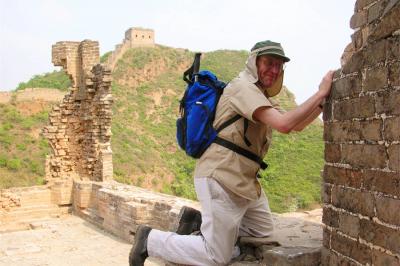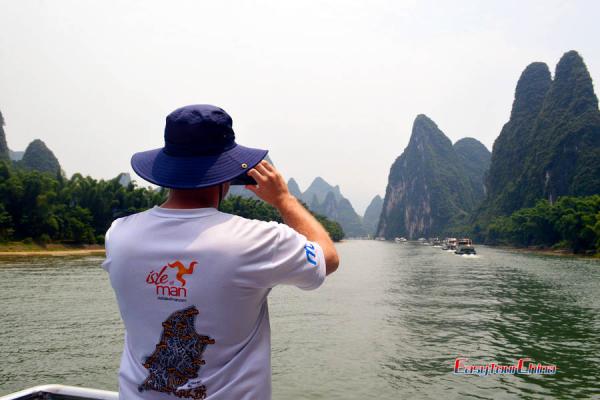Prince Gong's Mansion
Prince Gong Mansion (known as Gong Wang Fu in Chinese) is the largest and best preserved Qing Dynasty princely mansion and used to house several families, which shows us a typical example of how the upper class lived in that time. It is located just north of the Shichahai Lake, with a total area of 6000 square meters.
Beijing Prince Gong Mansion Facts
Brief Introduction: Layout
Prince Gong’s Mansion has orderly layout and excellent architecture craftsmanship, beautiful pavilions, halls, corridors, bridges, courtyards can be seen everywhere, which fully reflects the great fusion of the exquisite and delicate style of the royal family and the simple and elegant folk style of Qing Dynasty.
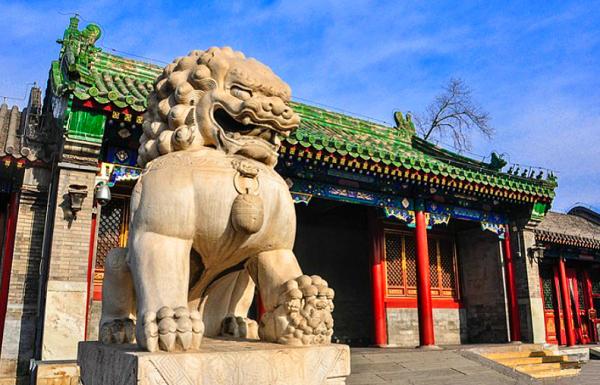
It consists of 31 pavilions, halls, and residential buildings, 9 courtyards, several arched bridges, large ponds with islands and swans, an immense rock garden in the classical style, and even its own private pagoda for gazing at the moon. The whole Prince Gong’s Mansion is divided into 2 areas: mansion and garden.
The first half of Gong Wang Fu is an opulent mansion, consisting of a cluster of more than 30 north-south facing buildings in the east, center and west. In the east, there are Duo Fu Xuan and Le Dao Hall. In the center, there are the Yinan Hall an d Jiale Hall. In the west, there are the Baoguang room and Xijinzhai.
The second half of Prince Gongs Mansion is a beautiful classical garden - Dui Jin Yuan, covering a total area of more than 28,000 square meters. The garden is surrounded by water and mountains, with towering ancient trees, winding corridors and pavilions, presenting a magnificent and natural scene.
The Prince Gong's Mansion is a masterpiece of the existing Qing Dynasty royal mansion architecture and garden art in Beijing. Don't miss it when you travel in Beijing.
History - When Was Prince Gong Mansion Built
Around the year 1777 during the Qing Dynasty, Prince Gong’s Mansion was originally constructed for Heshen, a prominent court official highly doted by Qianlong Emperor who was handsome, witty, self-confident and incredibly corrupt. In 1780, Emperor Qianlong Huangdi appointed Heshen's son, Fengshen Yinde, as the husband of Princess Hexiao. Heshen started to build this mansion on a large scale, which took about 8 years.
And in 1799, the Jiaqing Emperor (the successor to Qianlong Emperor) executed Heshen for his major offence of corruption, and then gave the mansion to Yonglin (Prince Qing), the 17th and youngest son of Qianlong Emperor. In 1851, the 6th brother of Xianfeng Emperor, Prince Gong became the new owner of the mansion. And that is where the name “Prince Gong Mansion” comes from. It witnessed the Qing Dynasty from rising and falling, so there is a saying “One Prince Gong’s Mansion, Half History of Qing Dynasty”.
Besides, from geomantic terms, the location of Prince Gong’s Mansion can be really called a “land of treasure”. It is said that the place in Beijing with the largest number of long-lived elderly people is near the mansion.
>> Recommended 1-day Classic Beijing Bike Tour
What to See: Architecture & Remains
While you wondering around here, you will find that the scenery changes at every step and the styles vary from different areas. The Prince Gong Mansion is praised as a sparkling pearl by the Shichahai Lake.
Among all the buildings, there’re several representative ones which will really make a deep impression on you, like the Grand Theatre Tower, the Western-style Gate, the Rear Building and the Stele of Fu. They are hailed as “three masterpieces and one treasure” of the Prince Gong’s Mansion.

Rear Building (后罩楼)
The Rear Building is located deep inside the mansion and is the natural boundary between the front mansion and the back garden. It is a 2-storey building with a total length of 191 meters, which is higher than all other buildings in Prince Gong Mansion. It has the function of protecting against the cold winter winds from the north.
This building, known as the He Kun Treasure House, has a total of 99 and a half rooms, taking the last digit of the 9,999 and a half rooms in the Forbidden City. In Taoism, 99 rooms and a half also carry the meaning of "abundance upon expiration".
The wall of the Rear Building is over one meter thick. It is hollow inside and used for storing gold, silver, and other treasures.
Western-style Gate (西洋门)
It is located at the southernmost end of the back garden and is the main entrance, which was renovated and built by Prince Gong. It is made of a single piece of white marble and carved in imitation of the grand water technique in the Old Summer Palace. The shape and pattern adopt a smooth and flowing Western style, thus it is called the Western Gate. The upper part of the front of the door is engraved with the words "Jing Han Tai Gu", and the back is engraved with the four characters "Xiu Yi Heng Chun", meaning to enjoy the tranquility of Tai Gu and embrace the spring scenery of the garden.
It is said that there were three such gates in China at that time, but the one in the Old Summer Palace was destroyed by the Anglo-French Allied Forces in 1860. Only this one has been preserved to this day. It is the largest white marble carved door still existing in China.
Passing through the Western Gate and entering the back garden, what catches the eye is a five-meter-tall Taihu stone. The front is in the shape of a fish, symbolizing an abundance every year. The other side of the stone resembles a woman holding a baby, symbolizing having many children and grandchildren.
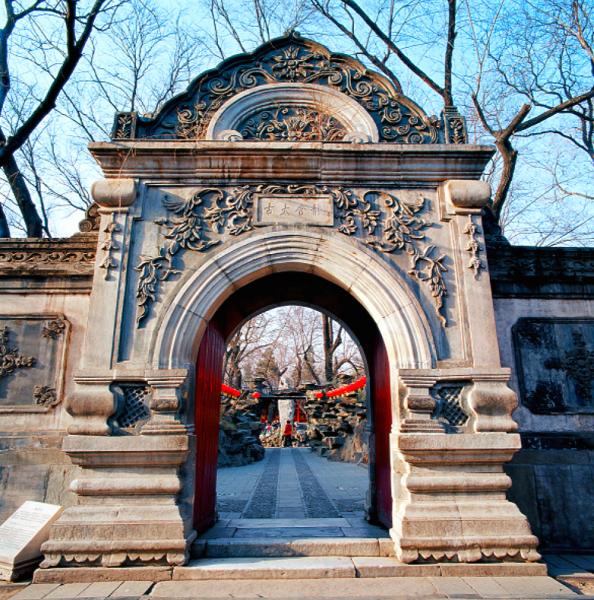
Grand Theater Tower (大戏剧楼)
Located in the eastern part of the Invitation Platform of Prince Gong Mansion, Grand Theatre Tower is the unique fully enclosed grand theater tower in China. Covering an area of about 700 square meters, it can accommodate more than 200 people. This theater is built with a kind of sound-absorbing wood and has a unique internal structure. It is said that there are several large vats hidden under the stage, arranged in a V shape. So although there is no audio equipment in the building, the audience in every corner can clearly hear the singing on the stage and the accompaniment of the Musical Instruments.
The ceiling of the theater and the surrounding walls were painted with wisteria and purple flowers. Not a single nail can be seen in the entire structure, and all the wall paintings on the four sides are hand-painted.
According to historical records, the floor tiles on the countertop were laid with the "golden bricks" (the floor tiles exclusively used in the most prestigious royal buildings) similar to those in the three golden Halls of the Forbidden City.
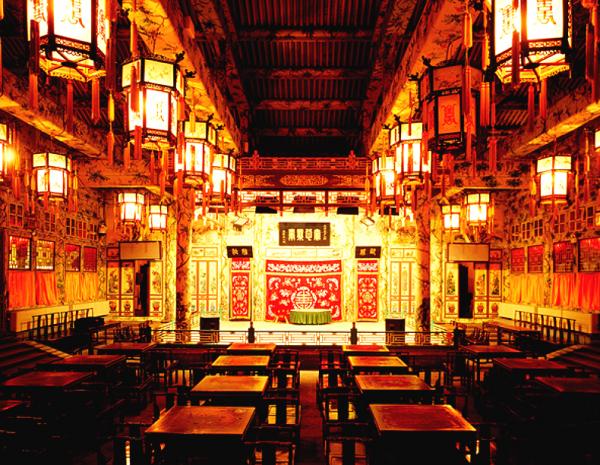
Besides, there’re many precious royal collection in the Prince Gong’s Mansion. And the garden in the mansion is also worth visiting. You will not only enjoy the beautiful scenery and garden design while strolling in it, but also get to know more about its rich culture and history.
Prince Gong Mansion Opening Hours
Peak season: Mar. 15-Oct. 31
Ticket office hours: 8:00 - 17:00
Closing time: 18:30
Off season: Nov. 1-the next Mar. 14 (The Museum closes on Mondays except on statutory holidays.)
Ticket office hours: 9:00 - 16:00
Closing time: 18:30
Ticket Prices
Admission: RMB 40
Coupon Ticket: RMB 70 (including the entrance ticket, professional tour guide fee, admission to spots, exhibitions, the Grand Theatre Tower, the opera show in the tower and tea and snacks during the show.)
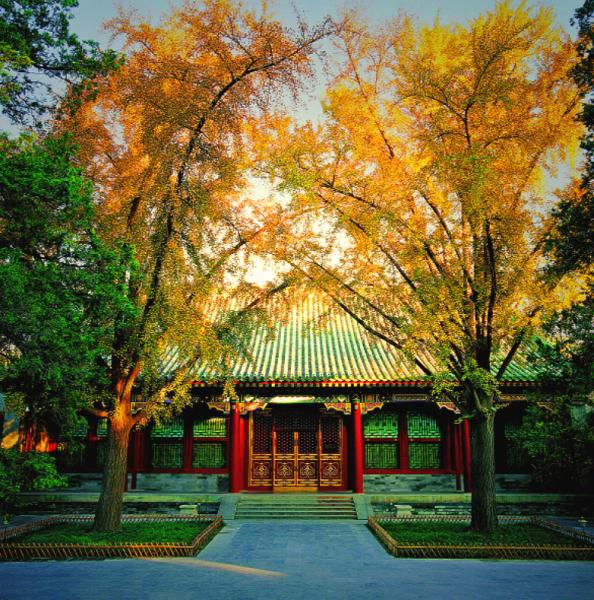
How to Get Here
Location: No.17, West Qianhai Street, Xicheng District, Beijing
By Subway
Take Subway Line 6 and get off at Beihai North Station.
By Bus
Take Bus 13, 42, 90, 107, 111, 118, 204, 609, 612, 623 or 701 and get off at Beihai Bei Men (Beihai North Gate) Station.
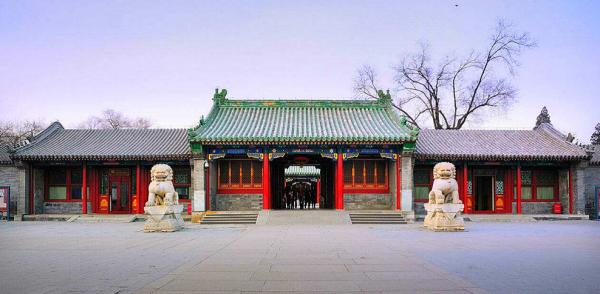
Travel Tips
1. The best season to visit the Prince Gong Mansion is spring and autumn, i.e. April, May, September and October. >> Understand Beijing Weather & Best Time to Visit Beijing
2. Because the Prince Gong’s Mansion is so close to the Shichahai and Houhai Hutongs in Beijing, so we suggest you can make an itinerary like this: after visiting the Prince Gong’s Mansion, you can have a sightseeing tour in the Shichahai area, and then cycle along Hutongs to experience the Beijingers’ traditional local life and taste some classic snacks. >> Explore Authentic Beijing Food: 33 Must-try Snacks & Dishes
Explore Beijing Prince Gong Mansion with Easy Tour China
At ETC, all our private tours can be customized to be the best flexible options for your trip to China. Your 1-on-1 travel advisor will create an Beijing tour itinerary with Prince Gong Mansion according to your time schedule, interests, and any other needs.
>> Recommended 42-day Absolute China Journey
